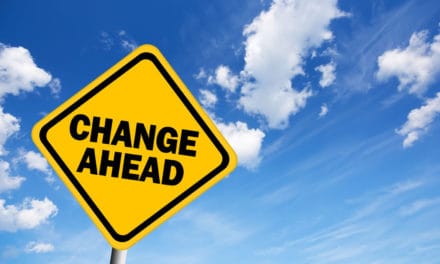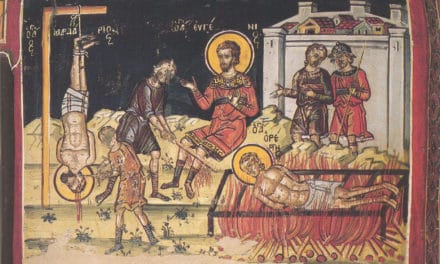Since last week’s episode was titled Westward Ho! As we track the expansion of the Faith into the New World with Spain and Portugal’s immersion, this week as we turn to the other Europeans we’ll title this week’s episode, Westward Ho-Ho, because I’m tired of saying Part 2. I know it’s lame, but hey, it’s my podcast so I’ll call it what I want.
Before we dive into this week’s content, I wanted to say a huge thanks to all those who’ve left comments on iTunes and the CS FB page.
Last week we ended the episode on the expansion of the Faith into the New World by speaking of the Spanish missions on the West Coast. The Spanish were urgent to press north from what would later be called Southern CA because the Russians were advancing south from their base in Alaska. And as any history buff knows, they’d already established a base at San Francisco.
Russians weren’t the only Old World power feared by Spain. The French had New World possessions in Louisiana and French Jesuits were active in the Mississippi Valley. Some dreamed of a link between French Canada and the South down the Mississippi River. The gifted linguist Father Marquette, sailed south along the Mississippi and attempted a mission among the Illinois Indians. While in Quebec, he’d made himself master of 7 Algonquin languages and gained a mighty reputation as an Indian-style orator. He combined preacher, pastor, explorer and geographer in one. His writings contributed to local knowledge of Indian peoples, culture, and agriculture. As any high school student knows, the French were to lose New Orleans and Western Mississippi to Spain, while Eastern Mississippi went to the British. But French Carmelites, a 16th C branch of the Franciscans known as the Recollects, and the Jesuits accomplished much in French possessions before the expulsion of the Jesuits in 1763. They’d attempted a failed mission to the Sioux. Nevertheless, French Roman Catholic influence remained strong in Canada.
As I tell these ultra-bare sketches of mission work among New World Indians, it can easily become just a pedantic recounting of generalized info. A sort of, “Europeans came, Indians were preached to. Churches were planted. Movements happened, some guys died – blah, blah, blah.”
Our goal here is to give the history of the Church in short doses. That means, if we’re to make any headway against the flow of it all, we have to summarize a LOT. But that works against real interest in the history and what makes the story exciting.
It’s the individual stories of specific people that make the tale come alive. à Jesuit, Franciscan, and Protestant missionaries; and just ordinary colonists who weren’t set on a specific mission but were real-deal born again followers of Jesus who came to the New World to make a new life for themselves and their descendants, and just happened to share their faith with the Native Americans and they got saved and started a whole new chapter in the Jesus story. è THAT’S where the good stuff is.
So, let me mention one of these Jesuit missionaries we’ve been talking about who brought the Gospel to Canadian Indians.
Jean de Brébeuf was born to a family of the French nobility and entered the Jesuit order in 1617. He reached Canada 8 yrs later. He learned Algonquin and lived among the Huron for 3 yrs. After being captured by the British, he returned to France but renewed his mission in 1633. He founded an outpost called St Marie Among the Hurons in 1639. The Mission was destroyed by the Iroquois a decade later.
Because De Brébeuf was tall and strongly built, he became known as the Gentle Giant. Like the Jesuits in Paraguay we looked at in the last episode, he could see ahead into how European colonists would bring an unstoppable challenge to the Indian way of life and advocated the Hurons withdraw into a secluded missionary settlement in order to preserve their culture. He’s an example of the heroic pioneer Jesuit, of which there were many, whose missionary life ended in martyrdom in the field.
De Brébeuf stands as a little known, but ought to be lauded, example of the fact that not all Europeans who came to the New World, especially not all missionaries, conflated following Christ with European culture and lifestyle. That’s an assumption many moderns have; that it wasn’t until the modern era that missionaries figured out people could remain IN their culture and follow Jesus, that they didn’t have to become converts to Western Civilization BEFORE they could become Christians. While it has certainly been true that some missions and eras equated the Faith with a particular cultural milieu, throughout history, MOST believers have understood that the True Gospel is trans-cultural, even super-cultural.
Many Jesuit missionaries in the New World like De Brébeuf tried to preserve the native American cultures – while filling them with the Gospel. They saw the emerging European colonies as a THREAT to the Indians and wanted to protect them.
With the end of the 7 Years War, or as it’s known in the US, the French and Indian War, French Canada became a British possession. The Jesuits, on the verge of their being banned from the New World, expanded their work among the Indians to include the Mohawks, Oneidas, Cayugas, and Senecas, as well as those Algonquins yet unreached in Quebec. While converts were made among the Iroquois tribes, the majority remained hostile. Among the converts, there was a huge problem with disease introduced by the missionaries themselves, and the influence of alcohol brought by Europeans. Indian physiological tolerance to hard alcohol was low and addiction quick. Jesuit missionaries reached the Hudson Bay area and baptized thousands. Even after the British won Canada and the Jesuit order was suppressed, some remained in Canada as late as 1789.
In the far NW, Russians entered Alaska in 1741. Russian Orthodox Christianity had begun on Kodiak Island, just off Alaska, in 1794. By ‘96 thousands of Kodiaks and the population of the Aleutian Islands had been baptized. They met hostility from the Russian American Company but the mission received fresh invigoration by the arrival an Orthodox priest from Siberia named Innocent Veniaminoff. He reached the Aleutians in the 1820s and mastered the local dialect well enough to translate the Gospel of Matthew and write a devotional tract that became a classic, titled = An Indication of the Pathway into the Kingdom of Heaven. After working among the Aleutians for some years, Veniaminoff served among the Tlingit people. After his wife died, he was appointed bishop of a vast region stretching from Alaska to CA. Between 1840 and 68 he carried out a massive work. Although 40 yrs of missionary service, often in conditions of tremendous physical hardship, left him exhausted and longing to retire, he was appointed Metropolitan of Moscow, a position he used to found the Russian Missionary Society as a means of support for Orthodox missions. His outstanding service was recognized in 1977 by the Orthodox Church of America conferring on him the title of ‘Evangelizer of the Aleuts and Apostle to America.’
Alaska was sold to the United States in the 1870s but the Orthodox Synod created an independent bishopric to include Alaska in 1872. By 1900 there were some 10,000 Orthodox Christians in the diocese. Of the 65,000 Alaskan and Aleutian people today, some 70% claim to be Christian and many of these belong to the Orthodox community.
The Roman Catholic orders had a great advantage in missions due to their central organizing body called The Sacred Propaganda for the Faith. Today this structure is called the Congregation for the Evangelization of the Nations.
In contrast to Roman monastic orders and their missionary zeal, Protestant churches had little missionary vision in the 16th C. When they engaged in missions in the 17th they had no organizing center.
French Protestants, led by the Huguenot Admiral Coligny, attempted a short-lived experiment off Rio de Janeiro when Admiral Villegagnon established a Calvinist settlement in 1555. It folded when the French were expelled by the Portuguese. A more permanent Calvinist settlement was made by the Dutch when they captured Pernambuco, a region at the eastern tip of Brazil. This settlement remained a Calvinist enclave for 40 years.
North America presented a very different scene for missions than Central and South America. The voyage of the Mayflower with its ‘Pilgrims’ in 1620 was a historical pointer to the strong influence of Calvinism in what would become New England. The states of Massachusetts, Connecticut and New Hampshire were strongly Congregationalist or Presbyterian in church life and heavily influenced by English Puritanism. At least some of these pioneers felt a responsibility for spreading the Christian faith to the native Americans.
John Eliot is regarded as the driving force behind the early evangelization of the Indians. He was the Presbyterian pastor at Roxby, a village near Boston in 1632. He learned the Iroquois language, and like the Jesuits in Paraguay, though surely with no knowledge of their methodology, founded ‘praying towns’ for the Indians. These were communities that, over a period of 40 yrs, came to include some 3,000 Christian Indians in Natick and other settlements. Eliot translated the entire Bible into Iroquois by 1663 and trained 24 native American pastors by the time of his death.
A remarkable family called The Mayhews were pioneers in missionary work in Martha’s Vineyard, Nantucket, and the Elizabeth Islands off Cape Cod. Thomas Mayhew bought the islands in 1641 with an Indian population of around 5,000. His son, Thomas Jr., began a mission and by 1651 200 Indians had come to faith. After the death of Thomas Sr. and Jr., John, youngest son of Thomas Jr., along with his son Experience Mayhew continued the mission. Experience had the advantage of fluency in the Indian language with the ability to write it. Zechariah, his son, carried on a tradition that lasted all the way to 1806 and produced many Indian clergy and a Harvard graduate. The ministry of the Mayhews spanned almost 2 centuries.
Another New England figure who became a missionary icon to such great spreaders of the faith as William Carey and David Livingstone, was David Brainerd. Brainerd was born in the farming country of Haddam, Connecticut, and studied for the ministry at Yale College, from which he was wrongly expelled in 1741. He impressed the local leadership of the Scottish Society for the Propagation of the Gospel enough for them to employ him for missionary service in 1742. He worked among the Indians of Stockbridge and then, after ordination as a Presbyterian, he worked in western Massachusetts, Pennsylvania, and New Jersey. There he experienced genuine religious revival among the Delaware Indians, which he recounted in detail in his journals.
Brainerd died young but his diary and the account of his life by the great preacher, theologian, and philosopher, Jonathan Edwards, became immensely influential in the Protestant world. Edwards, also a student at Yale, was himself a missionary at Stockbridge among the Indians from 1750–58.
While it’s risky to do a diagnosis on someone 270 years later, we glean from David Brainerd’s logs that he suffered from at least a mild case of a depression-disorder, and maybe not so mild. It’s his honesty in sharing with his journals his emotions that proved to be a tonic to mission-luminaries like Carey and Livingstone.
New England Presbyterians and Congregationalists were matched by other Protestants in their efforts among Indians. Episcopalians and the missionary society of the Church of England achieved some success in evangelizing them.
Work among the Iroquois of New York was initiated by Governor Lord Bellomont, and a converted Mohawk chief, Joseph Brant, who helped establish a Mohawk church. Queen Anne of England even presented silver communion implements to 4 Mohawk Christians in London in 1704 for use in one of their chapels.
In Virginia, the royal charter declared one of the aims of the colony was the conversion of Indians. The first minister of the village of Henrico, Alexander Whitaker, did significant missionary work and introduced the Indian princess, Pocahontas, to the faith.
BTW: Pocahontas was her nickname – which translates roughly to “Little Hellion.” Her real name was Matoaka, but she was so precocious as a child her nickname became her favored label.
Whitaker established a college at Henrico for the education of Indians and there were appeals for funding for Indian missions back in England by King James I and his archbishops so that 1 of 6 professorships at the College of William and Mary was set apart for teaching Indians.
Methodists had the example of John and Charles Wesley when they were Anglican priests and missionaries for the Society of the Proclamation of the Gospel in Georgia from 1735. Though John’s primary assignment was a chaplain for the English settlers, he tried to reach out to the Choctaw and Chickasaw. He had little response from the Native Americans. No wonder, since he’d later say he was most likely unconverted at that point.
After his break with the Church of England, Wesley’s chief lieutenant in the New World was Thomas Coke who became a driving force for Methodist missionary work, attempting a mission in Nova Scotia in 1786 before being re-directed to the West Indies by a storm. Methodist missions came into their own in the 19th C after Coke’s death and took the form of frontier preachers and ‘circuit riders’ under the direction of Francis Asbury, who traveled some 300,000 miles on horseback in the cause of the Gospel and whose vision included both Indians and black slaves for Methodist outreach. By the time of Asbury’s death in 1816 Methodist membership had risen from just 13 to 200,000 over a 30-yr period.
The 19th C in North America saw the far north reached by Roman Catholics, Anglicans, and Methodists.
The 19th C was a time of extraordinary development in North America, despite the ravages of the Civil War in the 1860’s. Great numbers of immigrants flooded into the country from Europe, estimated at 33 million between 1820 and 1950. Of British emigrants between 1815 and 1900, 65% found their way to the US. Of African-Americans, whereas only some 12% belonged to a church in 1860, by 1910 that number was 44%. Many joined the Baptist and Methodist congregations of the southern states after the abolition of slavery. In the Nation at large, the extraordinary achievement to any non-American was the blending into one nation of so many different peoples, so that their American citizenship was more prominent than their roots as Italian, Irish, Jewish, German, Scandinavian or English. This influx posed great challenges to the churches but Americans largely became a church-going people. And while differences over Religion had become the cause of so much misery and bloodshed in Post-Reformation Europe, Americans learned to live in civil harmony with people of other denominations.






“Westward Ho Ho”…. made me chuckle!
🙂
Lance,
Thank you so much for all the work you’ve put into these Podcasts. I’ve listened to everyone of them and they have really helped me better understand church history and how we got to where things are today. My wife found your podcast and shared it with me. Here are a few ways it has impacted me.
1. I grew up Lutheran, was in IVCF in college and have attended an Evangelical Free church for most of my adult life except for the three years I lived in Belgium as a Southern Baptist. I have a number of Catholic friends and it has helped open some doors of discussion with them. Just last week I was able to talk with an HR Manager where I work and explain that Jesus did it all of us.
2. My wife and I leave for Israel on Wednesday with our church. It will be a devotional tour lead by our Pastor (who was just up the road from you in Pismo Beach at one time) and a Jewish tour guide who worked with Ray Vanderlin on his documentary.
3. I restarted BSF after a 20 year break with the study of Moses last year. A great backdrop leading up to your Podcast and feeding into out Israel trip.
4.Finally – it is nice to hear from someone in a similar life stage – I’m 57 been married 35 years, have three adult children – all married and expecting two grandchildren.
Thanks again for the time and labor of love you’ve put into your Podcast. You’ve really filled a niche in a way to get information that is helpful to understanding faith today and how we got here. Thank you, thank you, thank you.
Kirby
Wonderful! Thanks for this Kirby. Love hearing the story of listeners.
Another missionary effort that respected the culture of the indigenous peoples was the Russian missionary effort in Alaska. Orthodox monks were first sent to Alaska to minister to the Russians involved in trading outposts. The missionary monks soon advocated for the Aleutian people against exploitation by the Russian trading company. The indigenous language was reduced to written form so that the Scriptures and service books could be printed for the churches serving the native people.
Ironically, after Alaska was sold to the growing United States, the established native Orthodox Church was viewed as somehow sub-Christian by missionaries sent from the United States. Pressure was put on the native people in these churches to abandon their native language and convert to the Western Christian denominations of the new colonizers.
Oops, you did cover the Russian mission to Alaska. I should listen to the complete podcast before commenting.
George,
Hahahahaha – yeah, might be a good idea.
Seriously, I appreciate your reminders to not forget the “rest” of the Christian world.
Lance